- Technology and Progress Assessment and Monitoring
- Criterion-Referenced Tests as a Formal Testing Instrument
- Astronomy: The Solar System. Lesson Plan (3rd Grade)
- Lesson Plan: Teach Lesson/Model
- Formal Assessment Tool: Response-to-Intervention Model
- Informal Assessment Tool: Assessment by Observation
- Reference List
Technology and Progress Assessment and Monitoring
- Technology allows for an accurate quantitative measurement of the students’ progress;
- Technology helps compare and contrast the results of two assessments;
- Technology gives an opportunity for an unceasing monitoring process of several students’ progress simultaneously ;
- Technology creates the opportunities for monitoring both verbal and non-verbal responses of the students to the tests (Shute, Ventura, Bauer & Zapato-Rivera, 2009).
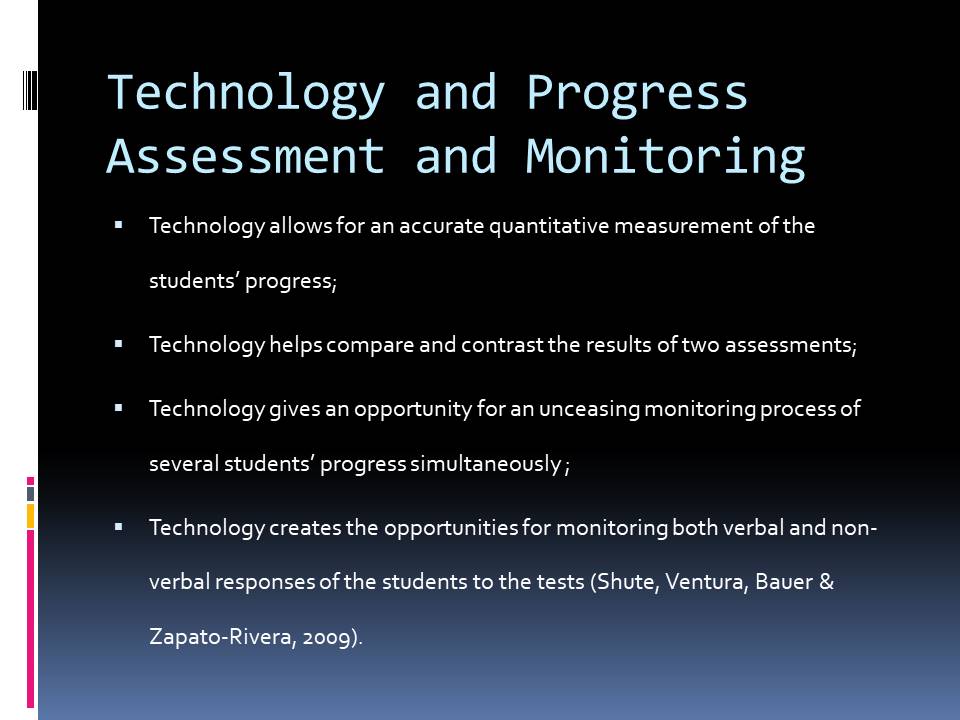
Criterion-Referenced Tests as a Formal Testing Instrument
A criterion-referenced test presupposes that a student should be able to produce a response to the question related to the material learned (Armstrong, 2011).
Advantages
- Flexibility (easy to tailor to different subjects);
- Possibility for students’ personal progress check;
- A clear line between the right and the wrong test results.
Disadvantages
- A CRT often presupposes multiple correct answers.
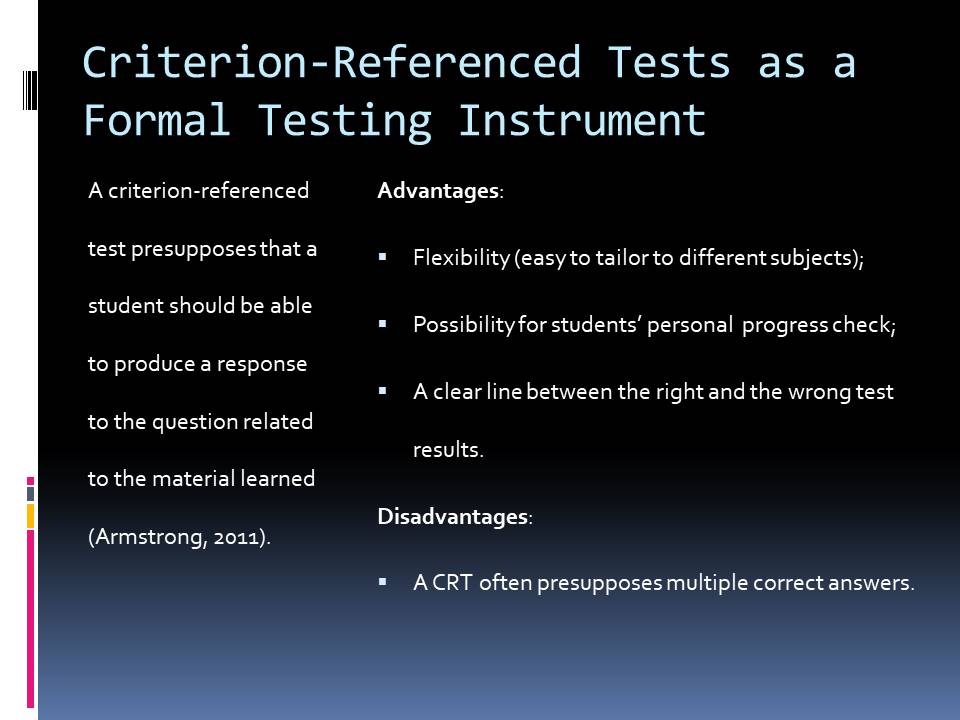
Astronomy: The Solar System. Lesson Plan (3rd Grade)
Standards
- The students know what a planet is (Villari,, n. d);
- The students know what a star is (Villari,, n. d);
- The students can name the eight planets of the Solar System and its star (the Sun) (Villari,, n. d);
- The students know what the Moon is (Villari,, n. d.).
Differentiated Instruction
- Visuals (posters, pictures, etc.) for ESL students;
- additional (more complicated) tasks for gifted students;
- Supportive materials and specific exercises for differently abled students.
Materials
- Model of the Solar System;
- Clay models of celestial bodies;
- Astronomy notebooks;
- Pictures of the Solar System;
- A4 sheets;
- Crayons, pencils and pens.
- Mobile applications.
Resources
- Textbook;
- Website (Kids astronomy, 2014);
- Online encyclopedias;
- A YouTube video (Turtledaily, 2012, May 4).
Anticipatory set
- Exciting the students with the idea that there are other planets similar to the Earth;
- Providing the students with general information about the Solar System;
- Prompting the students’ enthusiasm.
Guided Practice
- Defining the type of a celestial body based on its shape and look, with the student’s eyes closed (playing a game);
- Learning and reciting a short poem about the Solar System and its planets (Engaging in a dramatic play)
Independent Practice
- Drawing the planets of the Solar System in the right order (drawing);
- Learning more about the Solar System by reading a short story on the topic (reading books) (Using informal assessment measures, n. d., p. 1)
Objective
- Teaching the students the basics about the Solar System;
- Teaching the students the key information about the Big Bang.
Anticipatory set
- Reminding the students about the difference between a star and a planet, etc.;
- Specifying that Earth is also a planet;
- Noting that the Moon is a satellite.
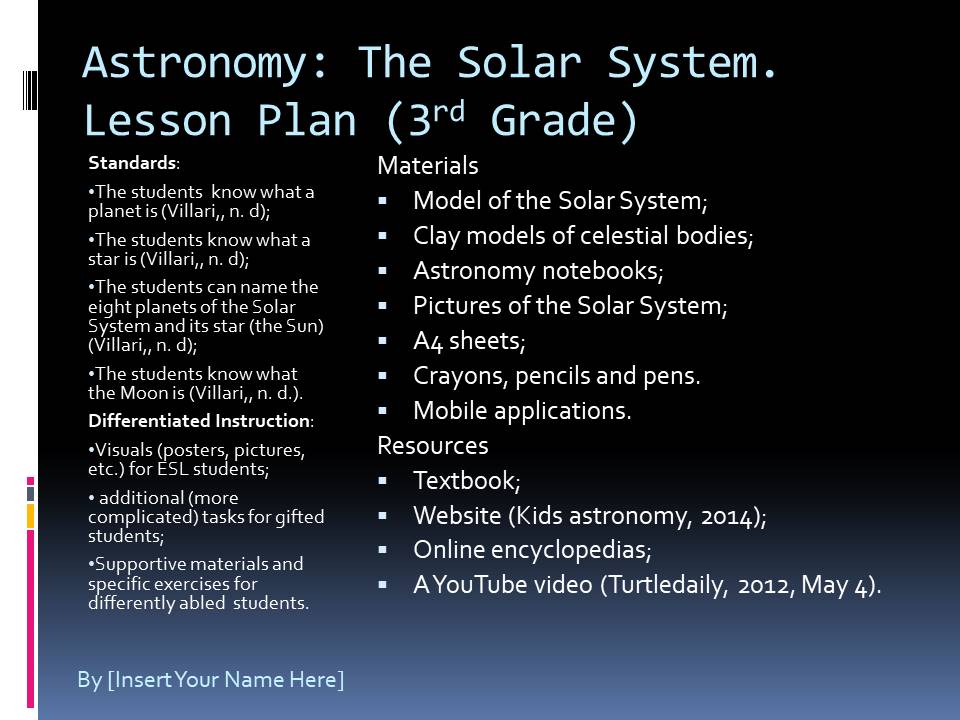
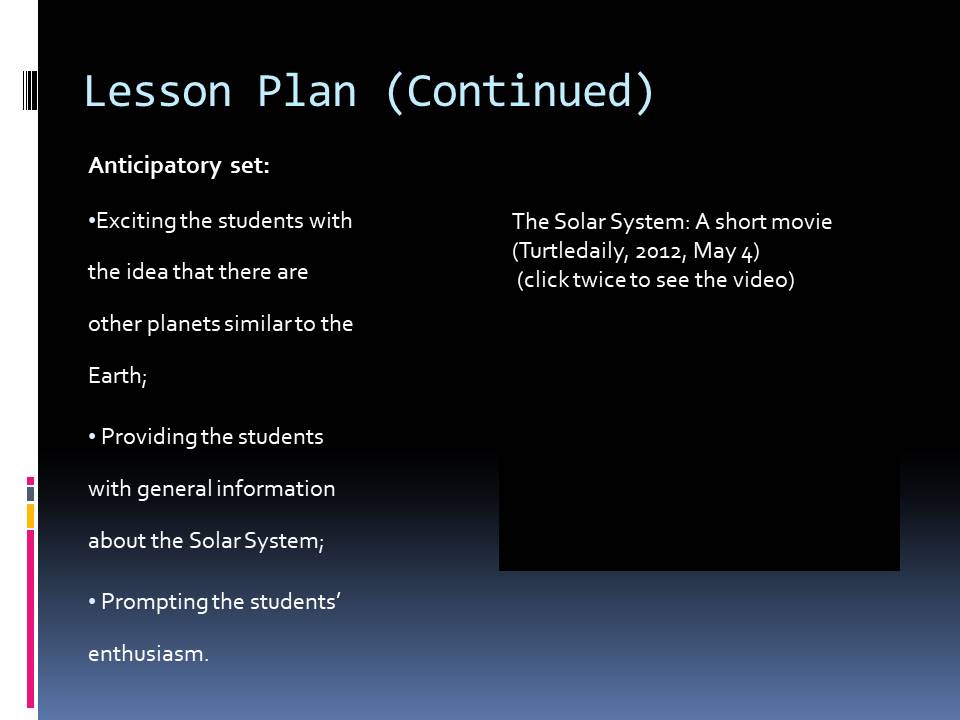
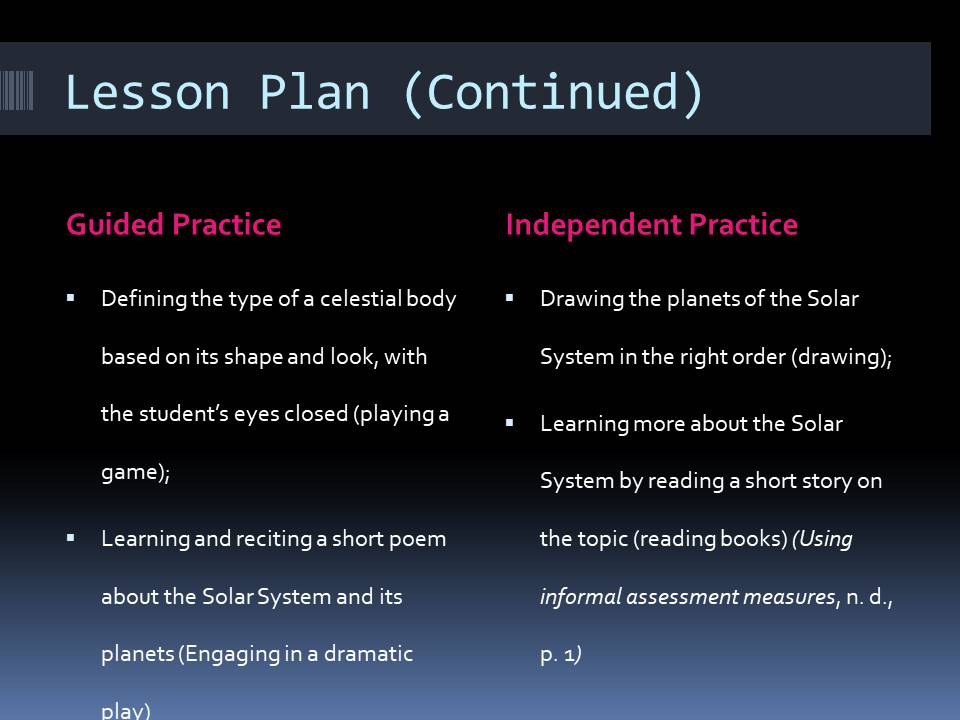
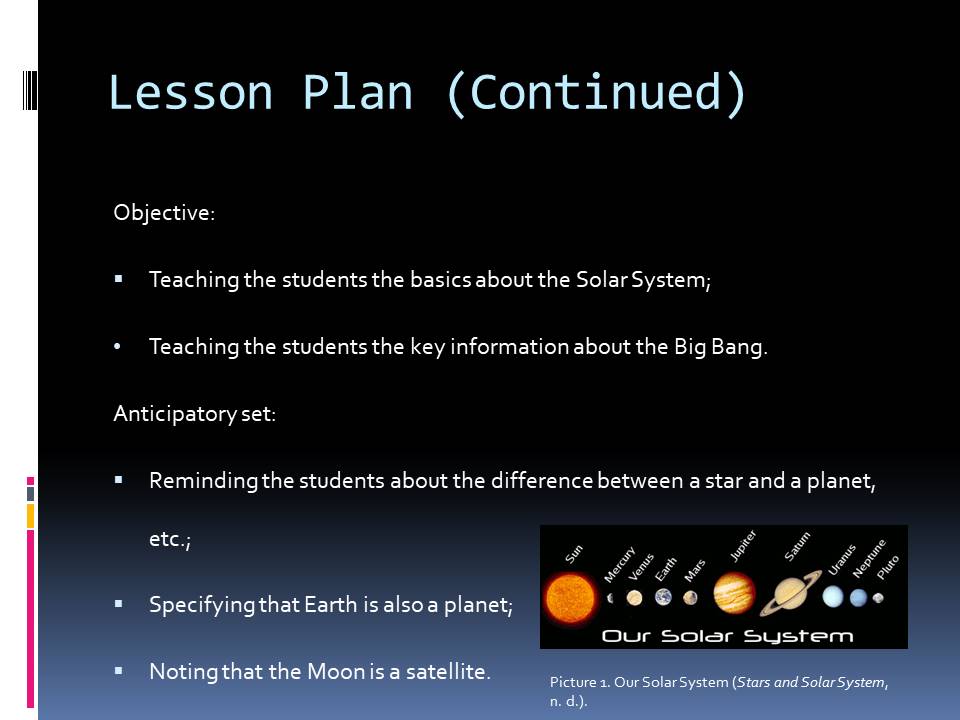
Lesson Plan: Teach Lesson/Model
- The students work individually;
- The students are provided with the handouts and other supporting material;
- The teacher explains the task to the students;
- The students carry out the assignment in 5-10 minutes;
- The students voice/show their results;
- The teacher provides a short commentary of each student’s progress;
- The students ask questions (if any).
Evaluation
- The results from the first and the final tests are compared;
- In the students, who did worse than 60% on the first test, an improvement by at least 10% is expected.
Closure
- The teacher thanks the students for their performance;
- The teacher comments on each student’s progress and rewards them accordingly (positive motivation);
- The teacher gives the students the home assignment.
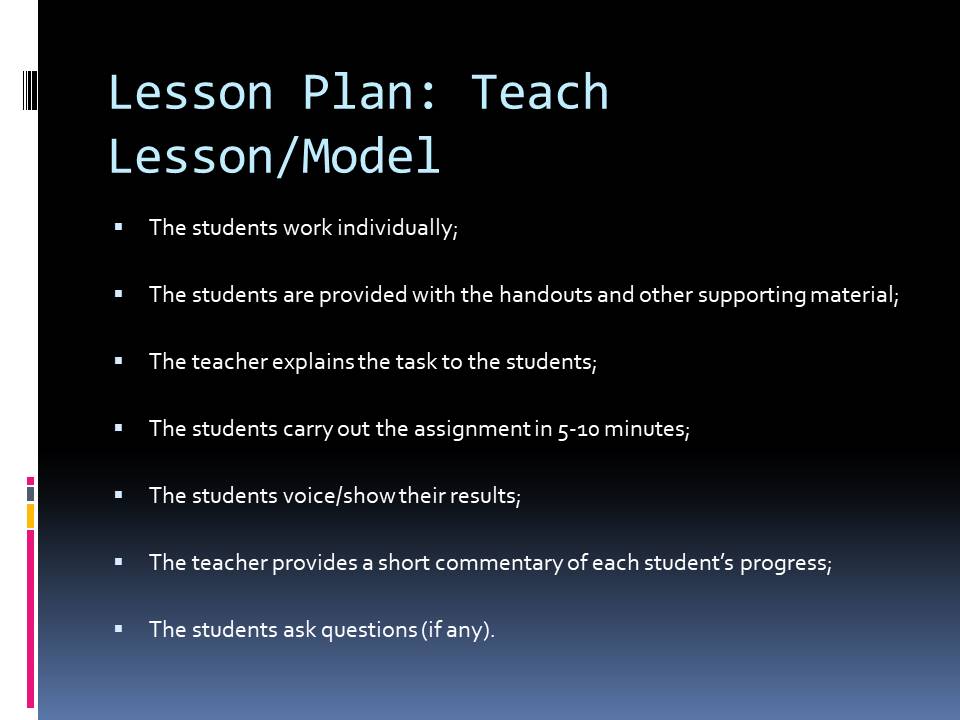
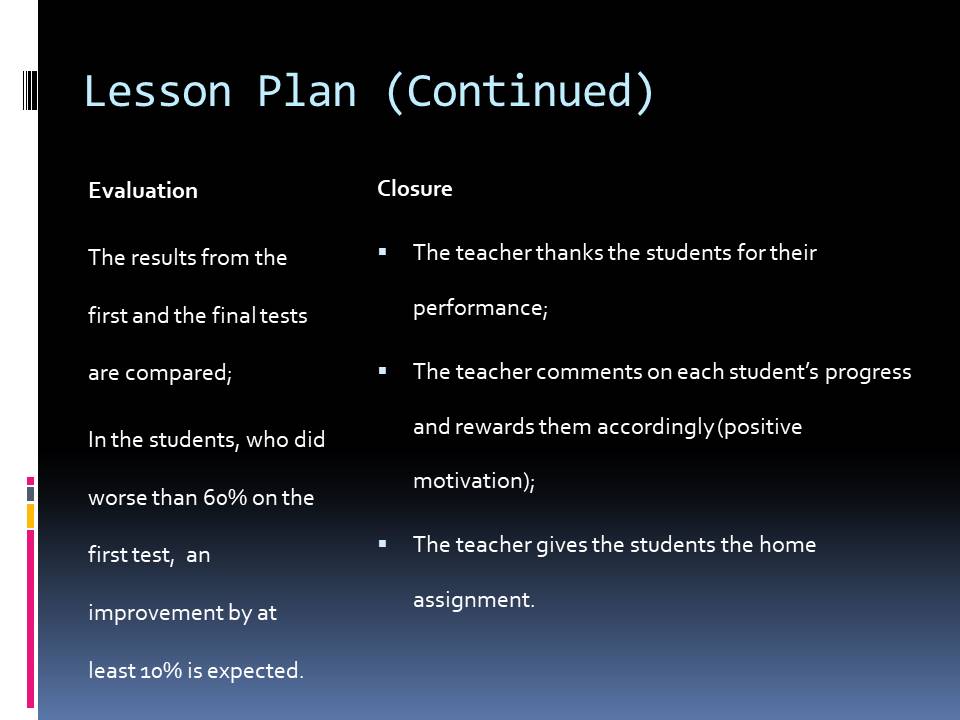
Formal Assessment Tool: Response-to-Intervention Model
- The parents are provided with the samples of correct and incorrect responses made by young learners in specific learning scenarios;
- The parents apply the assessment tool by providing the young learner with certain tasks, applying the proper intervention and recording the results;
- The parents record the responses and the effects that their interventions have had on the young learners;
- The parents are encouraged to use the assessment tool provided and fill the results in the form on the school site via mobile phone applications.
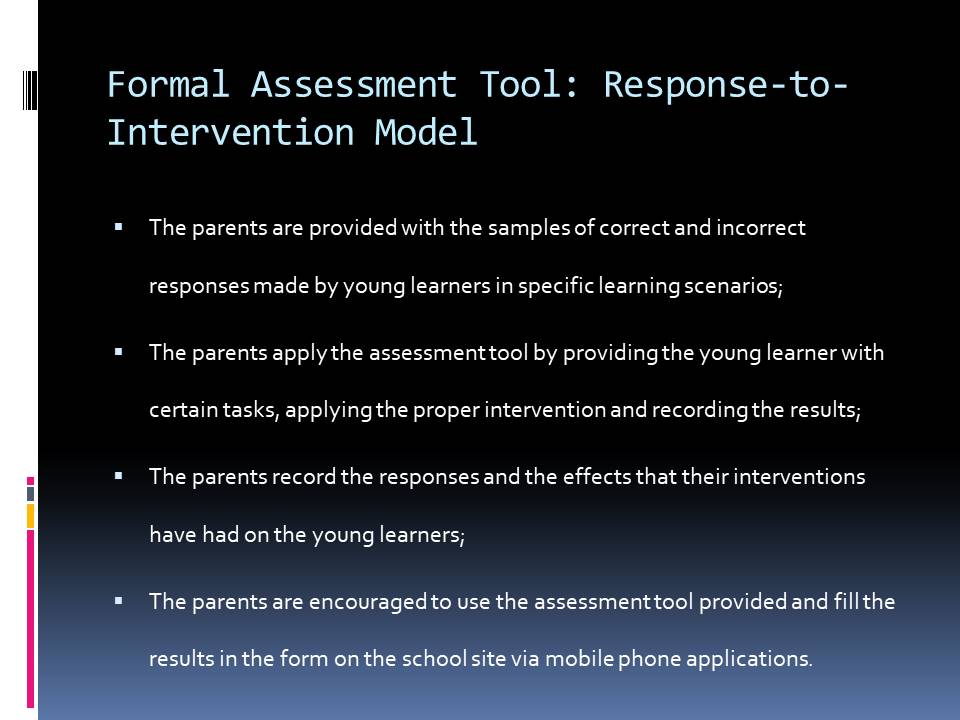
Informal Assessment Tool: Assessment by Observation
- It should be explained to parents that assessments need also to be taken in an informal environment;
- The parents should be provided with examples of the process of knowledge acquisition and use in children;
- The parents are encouraged by carrying out the assessment with their children (e.g., e-diaries and e-blogs are created for parents to fill in with the observations of the child’s progress).
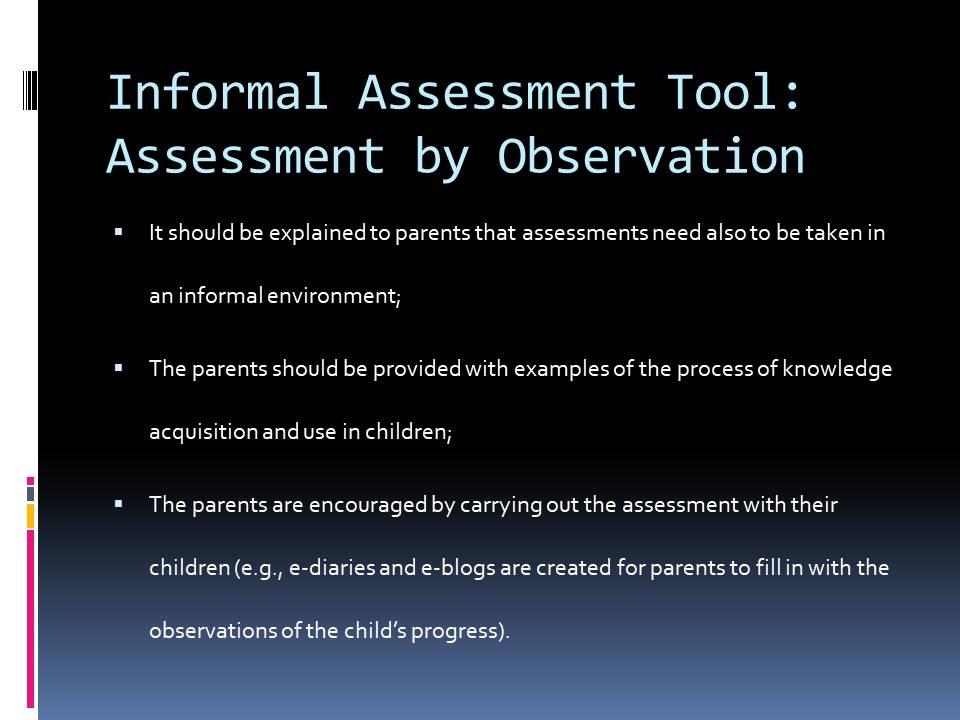
Reference List
Armstrong, T. (2011). Going beyond parroting: Testing 4 competencies using criterion referenced testing in oral English classes. Web.
Kids astronomy. (2014). Our Solar System.Web.
Stars and Solar System. (n. d.). Web.
Shute, V. J., Ventura, M., Bauer, M. & Zapato-Rivera, D. (2009). Melding the power of serious games and embedded assessment to monitor and foster learning. Serious games: Mechanisms and effects. 295-321. New York, NY: Routledge.
Turtledaily (2012). Solar System lesson for kids. Learn about planets , stars, galaxy. YouTube. Web.
Using informal assessment measures. (n. d.). Web.
Villari,, K. (n. d.). Astronomy. Web.